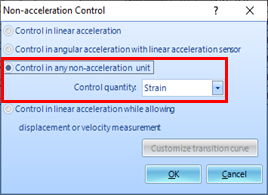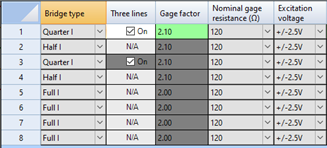Vibration Control Using Strain Gages: New Strain Rate Feedback
Crystal Instruments is excited to announce the addition of Strain Rate feedback to its arsenal of non-acceleration vibrational control strategies. The Spider-80SG/SGi system now supports the use of strain gauges as the primary control transducers. This feature allows users to define test profiles as a function of strain and frequency.
After recording strain data during normal operations, this powerful tool helps manufacturers simulate various levels of operating conditions to conduct fatigue studies among other applications and helps estimate the operational life of the article under testing. This proves to be vital where the test article sustains loading due to non-acceleration factors such as thermal loads.
To select strain-based control go to the input channel and select the Non-acceleration tab, then select Control in Strain:
Strain can now be set as the primary control unit, depending on the control strategies one or more channels can be defined as control.
The strain gauge settings can be edited on the Strain Gauge Parameters tab.
The test profile can now be set in terms of a strain profile over frequency.
Owing to the sensitive nature of the strain gauges, the control profile is smoother and tracks the test profile with greater accuracy. Add to this the inherent advantages of using a strain gauge, a nearly mass-less and very compliant sensor with excellent low frequency sensitivity. Compared to conventional sensors, strain gauges are cheap and robust sensors that do not load or stiffen the test article.
Acceleration and non-acceleration-based test profiles combined with various control strategies (weighted average, max, min and single) are among the many powerful tools provided by Crystal Instruments’ Spider systems and EDM Software for engineering professionals.







